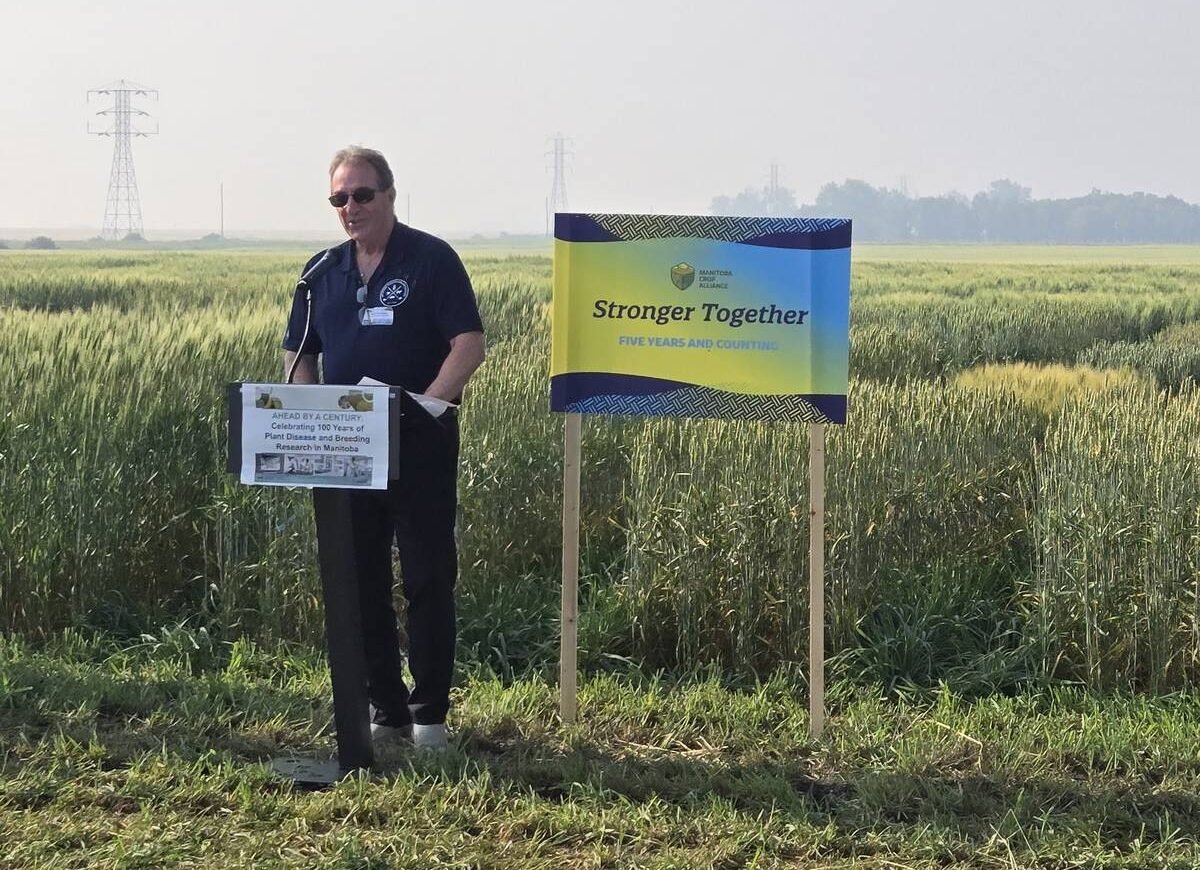The farm-to-table activity lately made its way to Molnar Farms in Barnwell, Alta., showcasing the procedure during a summer tour.
The numerous vegetables that James Molnar grows on the ranch were the centre of focus as he and Alberta Sugar Beetroot Growers executive director Jennifer Crowson spoke about the sugar beetroot crop and the company.
Given that Taber is the sole sugar beetroot processor left in Canada, most of the plant is grown within a close distance of the farming town.
Read Likewise

Manitoba marks 100 years of developing better plants
Manitoba has a rich background of crop breeding and illness management study that has actually aided shape Canadian agriculture as we understand it.
“We are an advertising board. What that suggests is we take care of allocation for the farmers,” claimed Crowson.
She claimed that besides the sugar content, beetroots can likewise profit livestock.
“We do have some folks around the province that will expand beetroots for straw, which implies for feed for their livestock. Because we’re an advertising and marketing board, we do have policies, so they do need to go through us when they are growing those beets.”
Sugar beets in southern Alberta are grown in a one-in-four turning to avoid condition stress.
“I expand corn, pumpkins, alfalfa, zucchini, durum and barley,” said Molnar.
“Normally, we attempt to adhere to sugar beets with a cereal, either durum or barley or springtime wheat. After that, after that grain, we’ll enter into pumpkins. After the pumpkins, we’ll enter into corn, and afterwards generally back to barley due to the fact that corn is a genuine large carrier of fusarium. We attempt to adhere to with barley because barley is the least vulnerable to fusarium. And after that we can go back to sugar beetroots again. It doesn’t always exercise that way, yet that’s sort of how we attempt to keep it.”
Because of the environment in Canada, the ASBG is unable to resource its seed within Canada, requiring two periods to expand.
Rather, the seed originates from the United States, with varieties specific to southerly Alberta conditions.
“One will be orange and one will certainly be blue, and that is the firm that produces the seed. So primarily we have actually got Beta and Haloppe. Each farmer sort of has their favorite. But, when we do the seed, it’s with a lottery system since we only have x number of seed of specific varieties. Everybody gets to place their name in a hat, basically, to get that.”
Cruiser insecticide is related to the sugar beetroot plant, primarily to eliminate against wireworms.
When the plant is gathered, it is sent to loading premises in 7 areas: Photo Butte, Coaldale, Tempest, Taber, Vauxhall, Enchant, and Bow Island/Burdett.
The beets are grown early in the springtime with the last crop going out in October.
From October to very early February, the beetroots are transported right into Rogers Sugar’s processing manufacturing facility in Taber. They go into a flume, where they are washed, shredded and boiled, creating a thin juice and beetroot pulp. The beet pulp is dried and become animal feed.
“They have to feed it to their animals within a day or two days, otherwise it starts to mould,” said Crowson.
“When we spin out this juice, we obtain a molasses. This molasses is utilized in pet feed and some alcohol manufacturing also. Yet it’s not used in baking due to the fact that it’s fairly sharp. When you see brown sugar, that’s not coming from Taber.”
White or granulated sugar in a Rogers Sugar bag with the number 22 as the beginning of the facility code originates from Taber.
“We as a farmer company advertise the crap out of that being grown and refined locally since we intend to get local,” said Crowson, including eight percent of the country’s sugar originates from Taber, the remainder being cane sugar.
Every 5 extra pounds of sugar beetroots produce about one extra pound of sugar.
A suitable storage space year is for temperature levels to remain cool enough from October to February to make sure that it will certainly lead to higher sugar web content.
A typical yield in a regular year is roughly 33 readjusted tonnes per acre.
A couple of years back, prime conditions included a warm spring, sufficient moisture, a warm end to the summer season with awesome evenings with the sugar being pressed from the fallen leaves back right into the plant. That year, the high yield was 45 changed tonnes per acre.
It’s really hoped farmers will certainly hit 30 tonnes this year, but ASBG was hit with a hard extended negotiating timeline with Rogers Sugar and producers wound up three weeks behind timetable.
“Our contract had not been consented to in concept up until May 8 and seed really did not enter into the ground up until May 14 Generally, we are seeding in the recently of April.”
Growers planted beetroots on 22, 500 acres this year compared to current background of 28, 000 acres. They could likely triple that outcome and still mange rotational requirements, possibly causing less grain crops.
Returns are much higher now than they when were.
“Twenty years back, we expanded about 19 to 20 tonne to the acre. Now we are expanding 30, 35, 40 tonne. It’s not that they (Rogers Sugar) have decreased their ability to process; we’ve increased what we’ve expanded per acre,” said Gwen Young, ASBG director for Bow Island/Burdett.
